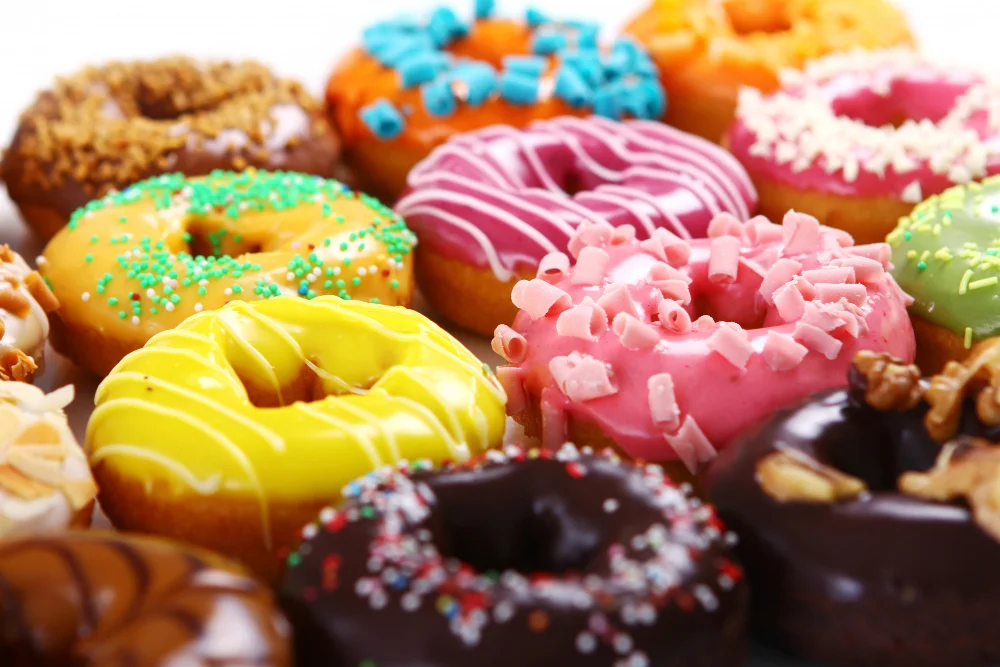Last month, while queuing at a local bakery in Shoreditch, I overheard a curious question from a child clutching his father’s hand: “Dad, why aren’t donuts ever square?” His father chuckled and mumbled something about it being “just tradition,” but the question stuck with me.
After years of writing about food culture, consumer trends, and baking techniques, I’ve learned that even the simplest questions can unearth fascinating insights. And this one? It’s not just about shape—it’s about science, history, efficiency, and a bit of human psychology too.
Let’s bite into the story behind why your favourite sugary treat has always been round—and why bakers have stuck with that shape for centuries.
The Shape of Tradition: A Brief History of Donuts
The modern ring-shaped donut has its roots in 19th-century America. But fried dough itself dates back thousands of years—archaeologists found traces of similar recipes in ancient Roman and Dutch cultures.
It was the Dutch settlers in New York (then New Amsterdam) who introduced “olykoeks,” or oily cakes—round balls of dough fried in fat. These dense cakes often had uncooked centres, which led to creative solutions. Enter Hanson Gregory, an American sailor, who, in 1847, supposedly punched a hole in the centre of the dough with a pepper tin, allowing the dough to cook evenly.
From that point on, the round, holed donut became iconic. But the question remains: why not evolve into squares like brownies or toast?
The Science of Frying: Circles Just Cook Better
Here’s a fun experiment I ran in my home kitchen: I fried equal-sized pieces of square, triangular, and circular dough in the same oil temperature. The circular ones came out the most evenly browned and puffed.
Why?
- Even Heat Distribution: Round shapes allow oil to circulate evenly around the dough, reducing the chance of raw spots.
- No Corners: Square shapes have edges and corners that often cook faster (and sometimes burn) due to higher exposure.
- Surface Tension: Circular dough has less surface area for its volume, meaning it’s more efficient in heat retention and consistency.
According to Dr. Helena Yates, a food scientist at the University of Leeds, “Round shapes provide a uniform cooking experience, especially in immersion frying. Edges and corners are hotspots for uneven browning and oil absorption.”
Efficiency in Production: Round Shapes Save Time & Dough
Commercial bakers don’t just think about aesthetics—they optimise for speed, waste, and cost.
- Circular Cutters Are Efficient: Donut dough is rolled and cut in large sheets. Circular cutters leave minimal scrap between each piece.
- Faster Rolling & Frying: Machines are designed to roll, cut, and drop circular doughnuts quickly into fryers.
- Easier Glazing & Packing: Round donuts roll smoothly on conveyors, fit perfectly in standard boxes, and dip cleanly in glaze tubs.
When I visited a small family-run bakery in Edinburgh, the owner, Elaine, showed me how they experimented with novelty shapes for Valentine’s and Christmas—but always returned to rounds for regular sales. “Customers love hearts in February,” she told me, “but by March, they just want their classic ring.”
Psychological Comfort: Circles Feel Friendly
There’s a subtle emotional layer here too.
Circles are often associated with comfort, softness, and safety. They appear in nature (sun, moon, eyes, fruit) and culture (plates, coins, hugs).
According to Dr. Sarah Longford, a consumer behaviour researcher, “Round shapes are subconsciously perceived as more approachable. Square or angular foods can seem more rigid or formal. The round donut invites indulgence without guilt.”
That may sound abstract, but think about it—how often have you seen a square chocolate bar versus a round one like Ferrero Rocher or Lindt truffles?
Square Donuts Do Exist—But They’re Rare
There are exceptions, of course.
Chains like Voodoo Doughnut or Donut Bar have played with square or custom-shaped donuts. Cronuts—a hybrid between croissants and donuts—are often square-ish. But these are novelty items, and usually sold at a premium.
Even then, many of them are square in shape but still fried and served with round holes.
Why? Because the square shape is either baked or partially pre-shaped, but the frying process still favours the round core for cooking efficiency.
Could Square Donuts Be the Future?
Not likely.
Unless baking or frying technology fundamentally changes, the round shape will remain dominant. It’s too efficient, too traditional, and frankly, too beloved to replace. Besides, most efforts to go “non-round” are about marketing—limited editions, visual variety for social media, or thematic packaging.
However, if air frying and baking continue to grow, we may see more square or custom shapes enter mainstream shelves—just not in the classic deep-fried form.
FAQs:
Q: Is it possible to make square donuts at home?
Yes, but they may not cook as evenly. Try baking instead of frying if you’re using sharp-cornered dough.
Q: Are square donuts more wasteful to make?
Yes, circular cutters leave less scrap dough than square ones.
Q: Do round donuts taste better?
Taste is subjective, but round donuts tend to be more evenly cooked, leading to better texture and flavour distribution.
Q: Why do some shops offer square donuts?
It’s mostly for visual appeal, branding, or seasonal variation—not because they’re better.
Takeaway: Round for a Reason
Next time you bite into a perfectly golden donut, think of the centuries of tradition, the science of even frying, and the subtle psychology that make that circular treat feel just right.
Donuts aren’t round just because someone once said so. They’re round because it makes sense—scientifically, emotionally, and economically.
Have you ever tried making square donuts at home? Or tasted one from a novelty shop? I’d love to hear your take in the comments below.
If you learned something new from this article, share it with a friend—or treat yourself to a donut and appreciate its perfect geometry.
Read Also: Can Birds Sleep While Flying?




